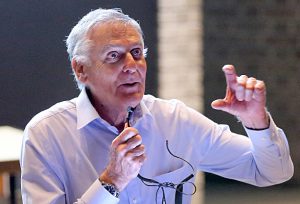
By Doug Sweet
McGill is playing host to a series of lectures in Crystallography, marking the International Year of Crystallography and the International Congress of Crystallographers here in Montreal until next Tuesday. The next lecture in the series is Monday, Aug. 11, in Leacock Room 132, from 8:15 to 9:30 p.m.
In this lecture, Prof. Ron Lifshitz, School of Physics and Astronomy at Tel Aviv University and of Condensed Matter Physics, at the California Institute of Technology, will discuss the advances in Crystallography that sprang from the controversial 1982 discovery of quasicrystals by Dan Shechtman, who was later to receive the Nobel Prize in Chemistry, but who was initially shunned and even attacked by his colleagues when he first proposed it.
Lifshitz will review the scientific revolution that sprang from Shechtman’s discovery and discuss the many effects it had on science and beyond.
Shechtman himself delivered the second of the lecture series Thursday night, outlining the story of the discovery of quasi-periodic crystals and describing the important role electron microscopy has played as an enabling discovery tool. Shechtman, the Philip Tobias Professor of Materials Science at Technion University in Israel, was awarded the 2011 Nobel Prize in Chemistry, but only after his research was initially castigated by such luminaries as fellow Nobel winner Linus Pauling, among others.
The statement from the Royal Swedish Academy of Scientists, which awards the Nobel Prizes, said in announcing Shechtman’s award: “In quasicrystals, we find the fascinating mosaics of the Arabic world reproduced at the level of atoms: regular patterns that never repeat themselves. However, the configuration found in quasicrystals was considered impossible, and Dan Shechtman had to fight a fierce battle against established science. The Nobel Prize in Chemistry 2011 has fundamentally altered how chemists conceive of solid matter.”
The discovery, which finds application in a wide range of products and materials, from steel, to diesel engines and even frying pans, arises from a concept “that comes from mathematics and art: the golden ratio,” the statement said. “This number had already caught the interest of mathematicians in Ancient Greece, as it often appeared in geometry. In quasicrystals, for instance, the ratio of various distances between atoms is related to the golden mean.”
Crystallography is the study of the arrangement of atoms in solid matter. It is McGill Principal Suzanne Fortier’s academic discipline.
